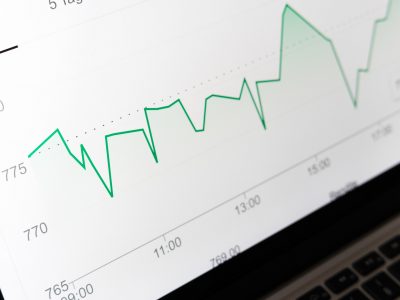The rising wedge pattern is a key chart pattern in technical analysis that signals a potential bearish reversal. It is formed when an asset’s price moves upward between two converging trendlines, indicating a narrowing trading range.
The pattern often appears after a significant price increase, signaling that the bullish trend is losing momentum. Traders closely monitor this pattern as it suggests a weakening buying interest and growing selling pressure, leading to a potential reversal or continuation of downward trends.
Key Characteristics
Bearish Implication: Typically forms after a significant price rise, hinting at a potential reversal or continuation of a downtrend.Narrowing Trading Range: The pattern’s converging trend lines reflect a decreasing trading range, suggesting waning bullish momentum.Significance for Traders: Recognizing this pattern helps traders anticipate market reversals and adjust their strategies to protect gains or capitalize on price declines.
Market Psychology Behind the Pattern
Understanding the psychology behind the rising wedge pattern is essential:
Bullish Sentiment Weakens: As prices rise within the wedge, buying interest diminishes, leading to smaller price increases.Seller Pressure Increases: Sellers gradually exert more influence, causing the trading range to narrow and prices to move closer to the support line.Impending Reversal: The pattern indicates a looming bearish reversal due to the convergence of the trendlines, as the imbalance between buyers and sellers becomes more apparent.
Identifying the Rising Wedge Pattern
To accurately identify the rising wedge pattern, follow these steps:
Support Line: The ascending lower trendline acts as a support level for the price. This line is drawn by connecting the lows of the price action.Upper Trendline: The upper trendline converges with the lower trendline, indicating consistent higher highs. This line is drawn by connecting the highs of the price action.Pattern Duration: The pattern can take weeks to months to fully form, signaling varying degrees of potential reversals.
Strategic Trading Approaches
Entry Points
Breakdown Entry: Enter a short position after the price breaks below the support line with strong volume. This confirms that sellers have taken control, signaling a bearish reversal. The breakdown is often sudden, so immediate entry is crucial for maximizing profits.Retest Entry: The price may retest the support line after the initial breakdown. Entering short positions on this retest offers a more favorable entry point, especially if the price faces rejection and confirms the downward move.
Stop-Loss Settings
Above the Upper Trendline: Place stop-loss orders above the upper trendline to protect against false breakdowns and sudden reversals. This placement ensures that losses are minimized if the pattern fails.Above the Breakdown Level: For tighter risk management, place stop-loss orders slightly above the breakdown level to limit losses if the breakdown does not continue as expected.
Profit Targets
Price Projection: Measure the height of the wedge from the base to the peak, and project this distance downward from the breakdown point to set a profit target. This technique provides a realistic price target based on the pattern’s structure.Previous Support Levels: Set profit targets based on historical support levels to lock in profits at crucial price points, ensuring gains are realized before potential bounces.
Other Similar Patterns
Falling Wedge
The inverse of the rising wedge, the falling wedge pattern signals a bullish reversal, with converging trend lines indicating a contracting trading range. It is often used to identify potential price increases in downtrending markets.
Learn More about Falling Wedge
Ascending Triangle
This pattern suggests bullish sentiment, with a flat resistance line and rising trendline reflecting buyers’ growing strength. It’s vital to distinguish this pattern from the rising wedge to avoid misinterpreting bullish signals.
Learn More About Ascending Triangle
Descending Triangle
A bearish continuation pattern, the descending triangle has a flat support line and descending trendline that signal sellers’ dominance. Understanding this pattern helps traders differentiate between bearish signals and other formations.
Learn More About Descending Triangle
Discover more key chart patterns and improve your trading strategies – check out our guide to master trading chart patterns.
Complementary Technical Indicators
Volume Analysis
Rising volume during the breakdown confirms strong selling interest, validating the pattern and indicating significant market participation.
Moving Averages
Use the 50-day and 200-day moving averages to confirm the prevailing trend direction. The price breaking below these moving averages adds confidence to the pattern’s breakout.
RSI (Relative Strength Index)
An RSI reading that supports the breakdown strengthens the signal for further downward movement. An RSI above 70 during the formation of the pattern indicates overbought conditions, suggesting a bearish reversal.
Helpful Trading Tools
TradingView
TradingView offers advanced charting tools to identify and analyze the rising wedge pattern effectively. Its customizable features enable you to overlay technical indicators, set alerts, and monitor market trends in real time.
TrendSpider
TrendSpider’s automated technical analysis makes it easier to screen for rising wedge patterns across multiple timeframes and markets. Its pattern recognition tools streamline the identification of rising wedges, helping you find opportunities efficiently.
Common Mistakes and How to Avoid Them
Jumping to Conclusions: Avoid trading before the breakdown is confirmed by a close below the support line. Trading prematurely based on incomplete patterns can lead to false signals and unexpected losses.
Ignoring Market Context: Always consider the broader market trend to interpret the pattern’s significance accurately. The rising wedge pattern is more reliable in bearish market conditions.
Overlooking Volume: Ensure rising volume supports the breakdown, indicating genuine market interest. Low volume during the breakdown may indicate weak selling interest, suggesting a false breakout.
Practical Examples
Bearish Reversal in Tech
A technology stock exhibited a rising wedge pattern over several weeks before a significant decline. The breakdown below the support line led to a strong downward move, highlighting the pattern’s reliability.
Major Selloff in Financials
A financial stock formed a rising wedge pattern over several months before a significant breakdown. The pattern predicted a strong bearish movement aligned with macroeconomic factors affecting the financial sector.
Final Thoughts on the Falling Wedge Pattern
The falling wedge pattern serves as a reliable indicator of bullish sentiment, enabling traders to anticipate potential market upswings and adjust their strategies accordingly. Recognizing this pattern involves understanding its structure and the market psychology that drives its formation.
By employing strategic trading approaches, leveraging complementary technical indicators, and utilizing advanced trading tools like TradingView and TrendSpider, you can effectively integrate the falling wedge pattern into your trading toolkit.
Frequently Asked Questions
The falling wedge features two converging trend lines that slope downwards, indicating a bullish reversal. In contrast, the symmetrical triangle has two converging trend lines that can signal breakouts in either direction depending on the prevailing trend.
Yes, the falling wedge pattern can appear in short timeframes, but its reliability may decrease due to increased volatility. For accurate analysis, it’s advisable to combine it with other technical indicators and look for confirmation over longer timeframes.










Comments